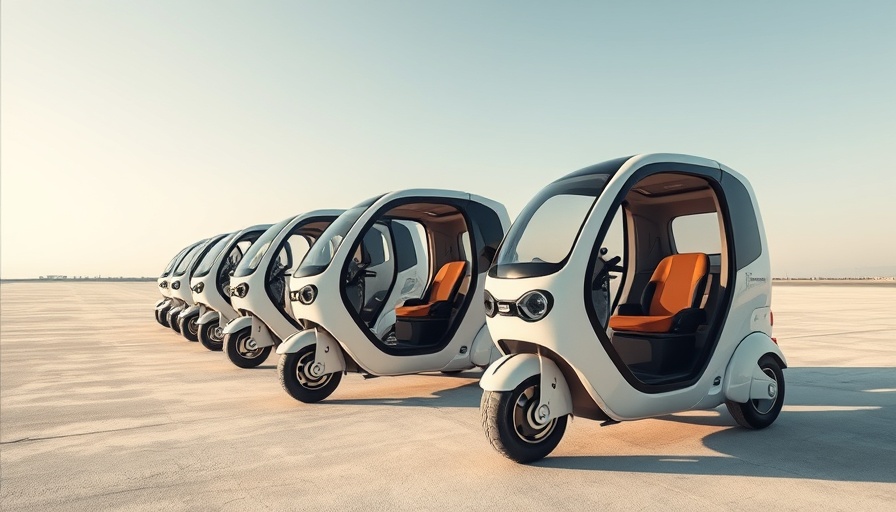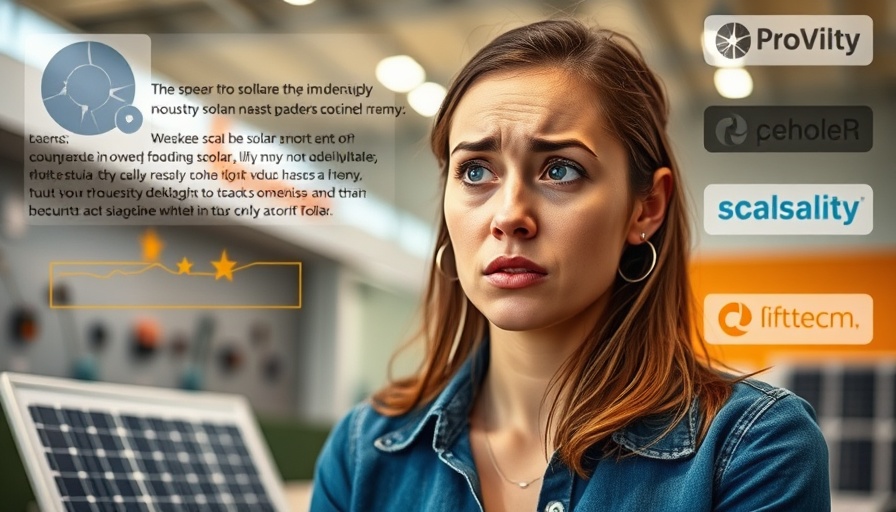
Embracing Humor in eMobility Innovations
April Fools’ Day often serves as a unique lens through which the world of innovative technologies is viewed, especially in the sector of electric mobility. This year’s pranks showcased not just creativity but a sharp commentary on our current state of electric vehicle (EV) progress and infrastructure. From whimsical charging mat technology to ludicrous transportation concepts, these jokes remind us of the lighter side of a serious transition to green energy.
Charge-Up Your Love Life: The Speed Dating Charging Station
One of the standout pranks this year was from EWE Go, who proposed a speed dating concept at charging stations. This innovative idea cleverly combines the necessity of vehicle recharging with social interaction, tackling the often stagnant experience of waiting for an electric vehicle to charge. As a representative from EWE Go noted, “Our charging points are usually located where customers spend a little more time, such as when shopping. So why not use the charging time in the supermarket car park for a nice get-together?” The implication here isn't just about charging cars but redefining how we perceive downtime—turning it into valuable social engagements.
The Mobile Toilet: A Humorous Take on On-Demand Solutions
Hyundai took a more absurd route with their fictitious product, Mobilet, which is described as an autonomous toilet that arrives via app request. With the tagline insinuating that it’s just a few minutes away when nature calls, Hyundai's prank showcases the growing expectation for on-demand solutions in urban settings. This imaginative spin on the serious innovations we expect in autonomous vehicles underscores an intrinsic modern dilemma: accessibility of essential services during travel.
Leap Into Charging: The Exercise Mat Concept
Leapmotor's idea of a charging mat that uses kinetic energy from physical activity stood out as another wildly entertaining concept. Touted as a way to charge your EV while exercising, the suggestion that hopping up and down could generate enough energy to charge a battery raises an interesting query about the potential of human energy harnessing in transportation. Imagine if leisure activities could contribute directly to our transportation needs; this kind of future seems both improbable and amusing.
Laughing at the Industry’s Seriousness
While these playful ideas are humorous, they also touch on significant challenges faced by the EV industry. The fact that they originate from real concerns—like how to efficiently utilize charging time—exposes a gap in genuine innovation. April Fools’ pranks like those from ChargeUp Europe highlight the absurd lengths companies might go to when traditional technological solutions feel lacking.
Government Regulations and the Future of eMobility
In a more serious vein, Eurotransport circulated a rumor about new German taxes on powerful diesel trucks. This policy direction, aiming to curb heavy-duty diesel sales in favor of greener options, poses a direct challenge to the resilience and adaptability of the electric transportation industry. Lighthearted jokes aside, regulations such as these are crucial to accelerating the transition to eMobility. The laughter from the April Fools’ Day posts contrasts sharply with the urgency for action in real-world environmental policies.
Conclusion: Finding Balance Between Humor and Innovation
While April Fools’ Day provides countless laughs, there's also a sincere call to action. It encourages stakeholders in electric mobility—from homeowners and businesses interested in sustainable practices to influential policymakers—to continue pushing the envelope of innovation. As we ponder the potential for kinetic charging mats and autonomous mobile toilets, we must also consider the practical steps toward a greener future. Let's leverage this humor as motivation, proving that even technology can benefit from a laugh as we charge ahead into the future on the pathways of electric mobility.
 Add Row
Add Row  Add
Add 




Write A Comment